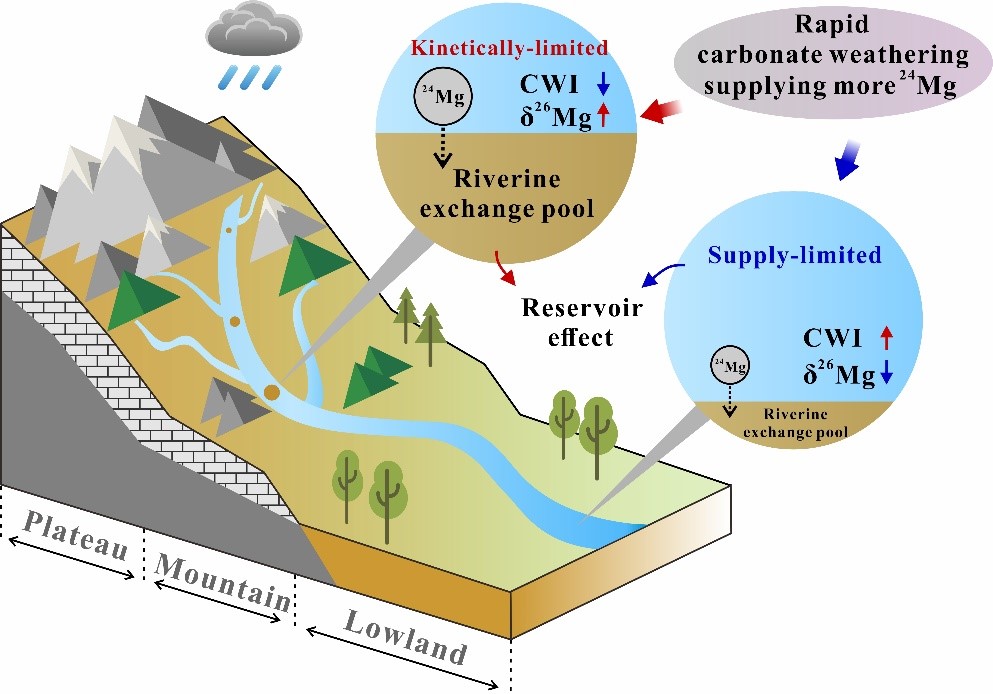Researchers Reveal the Controlling Mechanism of Riverine Magnesium Isotope in Extremely-High-Erosion Catchments
A joint research team led by the Institute of Earth Environment of the Chinese Academy of Sciences (CAS) has reported the spatial riverine magnesium isotope (δ26Mg) variation in the Three Rivers (the Jinsha Jiang, the Lancang Jiang, and the Nu Jiang), three extremely-high-erosion catchments in the southeastern Tibetan Plateau.
They found that riverine magnesium isotope had undergone “in-stream” fractionation driven by cation exchange associated with SPM delivered to rivers in large amounts under extremely-high erosion. A novel mechanism was proposed to reveal the negative correlation between riverine δ26Mg and carbonate weathering intensity in the Three Rivers and large rivers globally, leading to a refined riverine δ26Mg tool for the quantification of carbonate weathering at the continental scale.
This work was published in Geochimica et Cosmochimica Acta on 15 December 2023.
Riverine δ26Mg values were determined by a Thermo-Fisher Neptune Multi-Collector Inductively Coupled Plasma Mass Spectrometer (MC-ICP-MS), ranging from -1.39‰ and -0.50‰ within the Three Rivers catchments. Based on constraints of an inversion mixing model, the researchers has partitioned riverine Mg2+ sources and confirmed that Mg2+ budget was dominated by carbonate weathering, followed by evaporite dissolution in the Three Rivers. Then, they employed a conservative mixing analysis for riverine magnesium isotope, and found that riverine magnesium isotope has been fractionated by Mg2+-Na+ exchange during river transport associated with SPM or suspended loads.
Moreover, the team has calculated, based on the Rayleigh fractionation model, that at least 6-33% (and up to 58-73%) of the initial Mg2+ within the Three Rivers Basin was removed by cation exchange, with isotopically light Mg (24Mg) preferentially adsorbed into the riverine clay exchange pool under extremely-high erosion and suspended loads.
Extending the finding to global large rivers, they suggested that the negative correlation between riverine δ26Mg and carbonate weathering intensity could be interpreted by a competition between the fast dissolution of carbonates leading to the enrichment of 24Mg in waters and Mg isotope fractionation induced by cation exchange leading to the depletion of 24Mg in the residual waters.
This study provides new insight into cation exchange as a regulator of riverine δ26Mg and global Mg cycling.

A schematic illustration of riverine Mg isotope fractionation regulated by riverine exchange pool during carbonate weathering in different weathering regimes (Image by XU,et al)
Contact: BAI Jie, Institute of Earth Environment, Chinese Academy of Sciences, Xi'an, China. Email: baijie@ieecas.cn
 © 2015 Institute of Earth Environment,CAS
© 2015 Institute of Earth Environment,CAS Address:No. 97 Yanxiang Road, Xi'an 710061, Shaanxi, China

 Location :
Location :